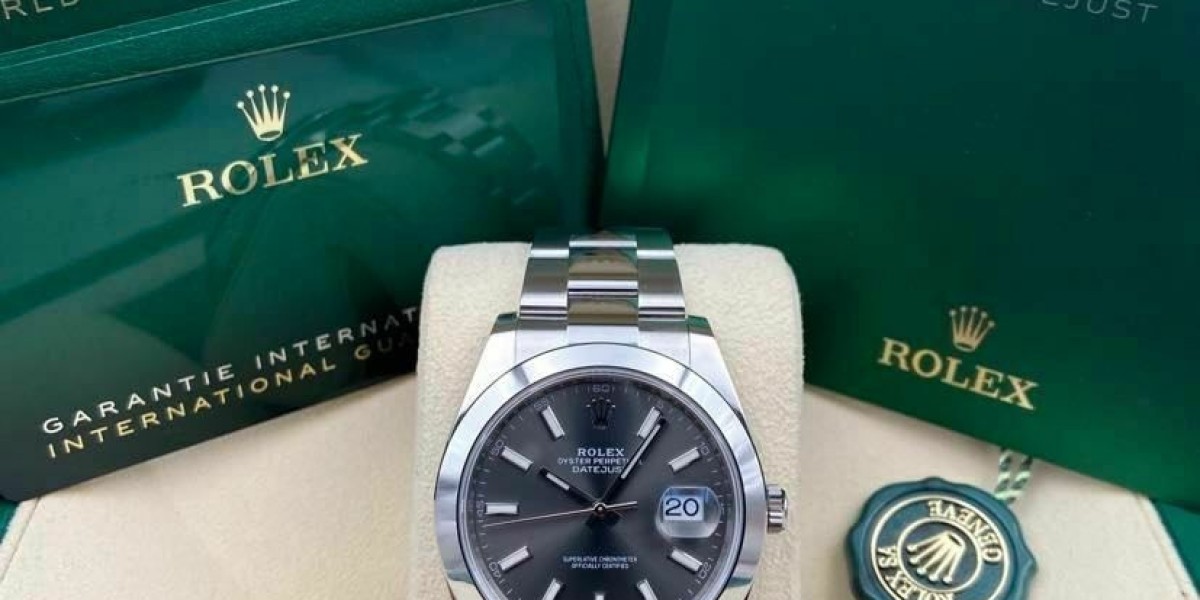Introduction
Replica Rolex watches have lengthy been a well-liked selection for those seeking to own a excessive-finish timepiece without the hefty worth tag. Nevertheless, one question that usually arises is whether these replica watches tick like the genuine Rolex timepieces. In this text, we will discover the mechanics of replica Rolex watches and decide in the event that they do indeed tick or in the event that they function in another way.
The Mechanism Behind Rolex Watches
To understand whether replica Rolex watches tick, we must first examine how genuine Rolex timepieces operate. Rolex watches are renowned for his or her precision and quality, thanks partly to their intricate mechanical movements. The heart of a Rolex watch is its motion, which is basically a posh assembly of gears, springs, and other elements that work together to maintain time accurately.
Rolex watches make the most of what is called a "Swiss-made" motion, which is synonymous with high quality and reliability on the planet of horology. These movements are sometimes made in-house by Rolex and are meticulously crafted to ensure accurate timekeeping. Considered one of the key characteristics of a Rolex motion is its smooth, sweeping second hand, which creates the illusion of a continuous motion somewhat than a collection of distinct ticks.
Do Replica Rolex Watches Tick?
With regards to replica Rolex watches, the answer to whether they tick isn't as simple. Replica watches are often made to mimic the appearance of genuine Rolex timepieces, right down to the smallest details. However, the internal mechanisms of replica watches are sometimes not as refined or precise as those found in genuine Rolex watches.
In many cases, replica watches use quartz movements fairly than mechanical movements. Quartz movements are powered by a battery and rely on a quartz crystal to regulate the timekeeping. Not like mechanical movements, which rely on intricate mechanical parts to keep time, quartz movements function with a series of electrical pulses that drive the motion of the hands.
Consequently, replica Rolex watches with quartz movements may exhibit a ticking motion, much like that of a typical quartz watch. This ticking is caused by the motion of the arms in one-second increments because the electrical pulses drive the gears of the watch. While this ticking may be noticeable to some, it will be important to note that it's not indicative of the quality or authenticity of the watch.
However, some replica Rolex watches could feature automatic movements that extra closely resemble the mechanical movements present in genuine Rolex watches. Automated movements are powered by the pure movement of the wearer's wrist, which causes a rotor inside the watch to spin and wind the mainspring. This winding motion drives the movement of the fingers and allows the watch to keep time.
Replica Rolex watches with computerized movements could exhibit a smoother, sweeping movement of the second hand, similar to that of a real Rolex watch. Nonetheless, the standard and precision of those movements might differ drastically depending on the manufacturer and supplies used in the watch.
Conclusion
In conclusion, the query of whether or not replica Rolex watches tick relies on the type of motion used within the watch. Replica watches with quartz movements are prone to exhibit a ticking motion, while these with automatic movements could have a smoother, sweeping motion akin to genuine Rolex watches. Ultimately, the decision to purchase a replica Rolex watch must be primarily based on personal choice and budget, holding in thoughts that the interior mechanics of those watches might not match the precision and high quality of a real Rolex timepiece.









